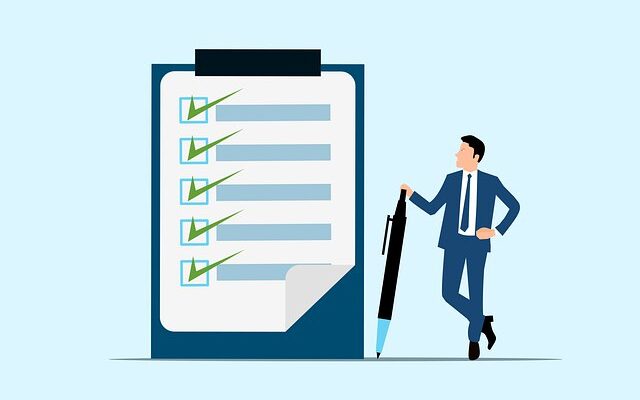Did you know businesses lose about $60 billion a year to preventable payment fraud? This…

Creating a Chargeback Reduction Plan: Step By Step
Did you know that the average chargeback rate across various industries is around 1%? This might seem small, but going over 1% can hurt your business. Payment processors might charge fees or even ban your account. Creating a solid chargeback reduction plan is key to keeping your finances safe and your customers happy.
This article will guide you through making a great chargeback management program. We’ll focus on important strategies to prevent chargebacks. These steps can greatly reduce your chances of facing disputes and help lower chargebacks.
Key Takeaways
- Understanding chargeback rates is key for your business.
- A chargeback reduction plan boosts payment processing efficiency.
- Finding out why chargebacks happen is a vital first step.
- Using effective chargeback prevention strategies can save money.
- Keeping track of your chargeback management success is important.
- Handling disputes well can build customer trust and loyalty.
Understanding Chargeback Reduction Plans
A chargeback reduction plan is key for merchants wanting to handle and lower chargebacks. It’s a detailed plan asked for by banks or card networks. It shows how a merchant plans to cut down chargebacks.
When a merchant’s chargeback rate gets too high, banks or card networks ask for this plan. They want to make sure the merchant is tackling any problems early on.
Definition of a Chargeback Reduction Plan
This plan outlines steps to lower the risk of chargebacks. It includes understanding customer habits, better service, and clear talks. A good plan shows payment processors you’re serious about keeping transactions safe.
Importance of a Chargeback Reduction Plan
In today’s payment world, a chargeback plan is very important. High chargeback rates can hurt your business’s image, cash flow, and cost a lot. They might even take away your right to process payments.
By focusing on lowering chargeback rates, you keep your earnings safe and your reputation strong. This builds trust with customers and helps your business grow.
Creating a Chargeback Reduction Plan
The first step in making a chargeback reduction plan is to gather important business information. This data is key to creating a chargeback management program that fits your business. Look at your products, payment rules, marketing, billing, and customer service.
Use customer feedback and analytics to understand your business better. This helps spot areas that might cause chargebacks.
Gathering Essential Business Information
Collect all the details that could affect your chargebacks. This includes your products, how you take payments, and how you interact with customers. Knowing what customers go through with your business helps you make a plan to lower chargebacks.
Identifying Causes of Chargebacks
It’s important to find out why chargebacks happen. Look at past chargeback data to see what kinds of issues there are. This helps you figure out how to solve these problems.
By knowing why customers dispute charges, you can make better plans to stop it. Keep track of what causes problems, like wrong product info or service issues. This helps you make specific plans to fix these issues.
Current Chargeback Prevention Strategies
Check what you’re already doing to prevent chargebacks. You might use things like AVS, CVV, and alerts for suspicious transactions. It’s good to know what you’re doing and if it’s working.
Make sure your prevention methods match the reasons for chargebacks. This way, you can tackle chargebacks more effectively.
Implementing Effective Chargeback Solutions
After you’ve made a plan to reduce chargebacks, it’s time to put it into action. This step is about using new tech and improving old ways. It’s important to focus on lowering chargebacks.
Think about updating your return and refund policies. Also, consider using fraud detection software and improving customer service training. Each step helps lower chargebacks and keeps customers happy. Being clear about your policies can also prevent misunderstandings.
At IntegralPay we can help you with your chargeback reduction plan and provide value-added services to reduce chargebacks and fraud in your business. Contact us today and find out more!
Strategies for Reducing Chargebacks
Use different ways to fight chargebacks in your plan. Start a strong chargeback management program. Teach customers about your policies and how payments work.
Train your team to answer questions well and solve problems early. Good customer service can really cut down on chargebacks.
Monitoring and Measuring Success
Keep an eye on how well your plan is working. Track chargeback rates closely and set clear goals. Look at how often disputes happen and how fast they get solved.
This helps you see how you’re doing. Keeping detailed records lets you really check your progress. It helps you find what you can do better.
Conclusion
Creating a detailed chargeback reduction plan is key to lowering chargebacks and protecting your business’s reputation. Understanding its importance helps you take steps to gather needed info and find the causes of chargebacks. Then, you can use effective solutions that fit your business.
Every step you take helps protect your money and improves your business. Handling chargebacks is not just about saving money. It’s also about making customers happier and improving how you run your business. By focusing on good solutions, you can turn problems into chances for growth and success.
Being proactive in your chargeback plan helps you build better relationships with customers. This makes your business stronger and more successful in the long run.



Comments (0)